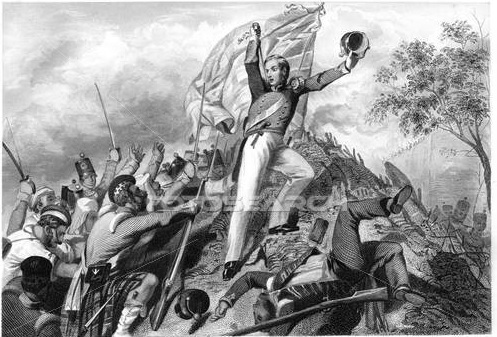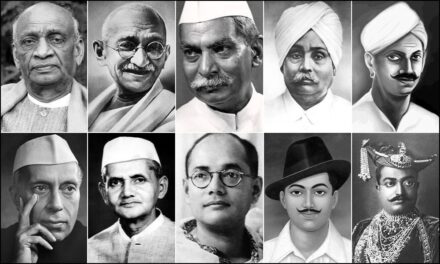India’s freedom struggle stands as a testament to the power of perseverance, unity, and nonviolent resistance in the face of oppression. Spanning decades of resistance against British colonial rule, it was marked by a diverse array of movements, leaders, and strategies. From the early rebellions against British East India Company rule to the mass mobilization led by Mahatma Gandhi and the Indian National Congress, Indians fought tirelessly for their right to self-determination. The struggle encompassed acts of civil disobedience, boycotts, protests, and sacrifices, culminating in India’s independence on August 15, 1947. The legacy of this historic struggle serves as a source of inspiration not only for India but for liberation movements worldwide, underscoring the enduring importance of freedom, justice, and equality.
Discontent Among Indians
During British rule in India, many Indians were unhappy because of the unfair practices and policies of the British government. One major reason for discontent was the heavy taxes imposed on Indian farmers. These farmers, already struggling due to poor harvests, were forced to pay high taxes. If they failed to pay, their land was taken away. This caused widespread poverty and suffering in rural areas. Another major issue was the cultivation of indigo. British planters forced Indian farmers to grow indigo instead of food crops. Indigo was in high demand in Europe for dyeing cloth, but it exhausted the soil and left farmers with little income. Farmers were paid very little and had no choice but to obey the British planters. In addition, the import of cheap mill-made cloth from Britain hurt Indian weavers and artisans. Traditional Indian handloom weavers could not compete with the cheaper and machine-made British cloth. This led to the collapse of local industries and unemployment among skilled Indian workers. Together, these economic hardships created deep resentment among Indians and led them to lose faith in the British administration. These problems laid the foundation for the first major uprising against British rule.
Revolt Against the British
The widespread anger and suffering of the Indian people led to the great Revolt of 1857, also known as the First War of Indian Independence. It began as a mutiny of Indian soldiers in the British army but soon spread across northern and central India. Many brave leaders emerged during this revolt. Tantia Tope, a general of the Maratha army, played a key role in organizing resistance and fought bravely in several battles. Bahadur Shah Zafar, the last Mughal emperor, became the symbolic leader of the revolt. Though elderly, he inspired many Indians to unite against the British. Nana Sahib, the adopted son of the Maratha Peshwa Baji Rao II, led the revolt in Kanpur and tried to reclaim his family’s rights. Rani Lakshmi Bai, the queen of Jhansi, became one of the most iconic figures of the revolt. Dressed as a soldier, she fought fiercely to protect her kingdom and her people. Begum Hazrat Mahal of Awadh also joined the revolt and took control of Lucknow for a time. These leaders inspired countless others to rise against British oppression. Although the revolt was eventually crushed by the British, it marked the beginning of a new era of resistance and showed the courage and determination of the Indian people.
After the Revolt
After suppressing the Revolt of 1857, the British government realized the need to make major changes in its way of ruling India. One of the most significant outcomes was the end of the East India Company’s rule. The British Crown took direct control of India in 1858, and India officially became a part of the British Empire. A new position, the Viceroy of India, was created to represent the British monarch. The British government promised to treat Indians more fairly, respect their religious beliefs, and include Indian princes in the administration. However, in reality, the British continued to exploit India’s resources and people. They reorganized the army to reduce the chances of future mutinies and increased surveillance of Indian society. Though the revolt failed in achieving independence, it awakened a new spirit of unity among Indians. It made people realize the need to come together to fight for their rights. The revolt also forced the British to take a more cautious and calculated approach in their rule. Indians, too, began to understand the importance of unity, education, and reform. This period after the revolt laid the groundwork for future leaders and reformers to emerge and guide the country towards freedom.
Social and Religious Reformers
As British rule continued, many Indian leaders realized that for India to progress, it was necessary to reform society and fight against social evils like child marriage, caste discrimination, and the lack of education for women. One of the earliest reformers was Raja Ram Mohun Roy, who is known as the “Father of Modern India.” He worked tirelessly to abolish the practice of Sati (where widows were forced to burn themselves on their husband’s funeral pyre) and promoted women’s education. He believed in combining the best of Indian traditions with modern Western ideas. Another great reformer was Ishwar Chandra Vidyasagar, who focused on improving education and worked for the rights of widows to remarry. He was a strong advocate for girls’ education and worked to open many schools for them. Debendranath Tagore, the father of Rabindranath Tagore, was a religious reformer who led the Brahmo Samaj, a movement that aimed to purify Hinduism and promote equality and justice. These reformers encouraged Indians to think for themselves, embrace reason, and stand against outdated traditions. Their efforts helped modernize Indian society and inspired people to take pride in their culture while striving for progress. These reform movements played a crucial role in awakening a national consciousness among Indians.
Rise of Nationalism
As Indians became more aware of British exploitation and social reform took root, a new feeling began to grow—nationalism. People started feeling a strong sense of pride in their country and wanted to fight for its freedom. Educated Indians began to speak up against British policies and demanded rights. This led to the formation of the Indian National Congress (INC) in 1885. It was the first political party in India that aimed to give Indians a voice in governance. The INC brought together people from different parts of the country to work for a common cause. The organization was founded with the help of a British officer named Allan Octavian Hume, who believed Indians should be able to express their grievances peacefully. Womesh Chandra Bannerjee, a lawyer from Bengal, was the first president of the Congress. In its early years, the Congress demanded simple reforms like more Indians in government jobs and the right to speak against unfair laws. Though these demands were moderate, they laid the foundation for a stronger freedom movement in the years to come. The rise of nationalism united Indians across regions, religions, and languages. It became the spark that eventually grew into the powerful movement for India’s independence.
The worksheet covers the following topics: –
Discontent among Indians- Heavy Taxes, Indigo planting, Import of cheaper mill-cloth
Revolt against the British- Tantia Tope, Bahadur Shah Zafar, Nana Sahib, Rani Lakshmi Bai, Begum Hazrat Mahal
After the Revolt- End of East India Company,
Social & Religious Reformers- Raja, Ram Mohun Roy, Ishwar Chandra Vidyasagar, Debendranath Tagore
Rise of Nationalism- Indian National Congress, Octavian Hume, Womesh Chandra Bannerjee

















